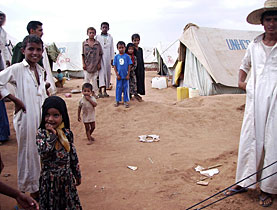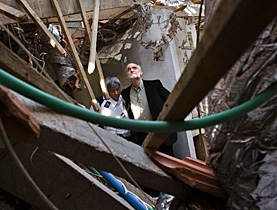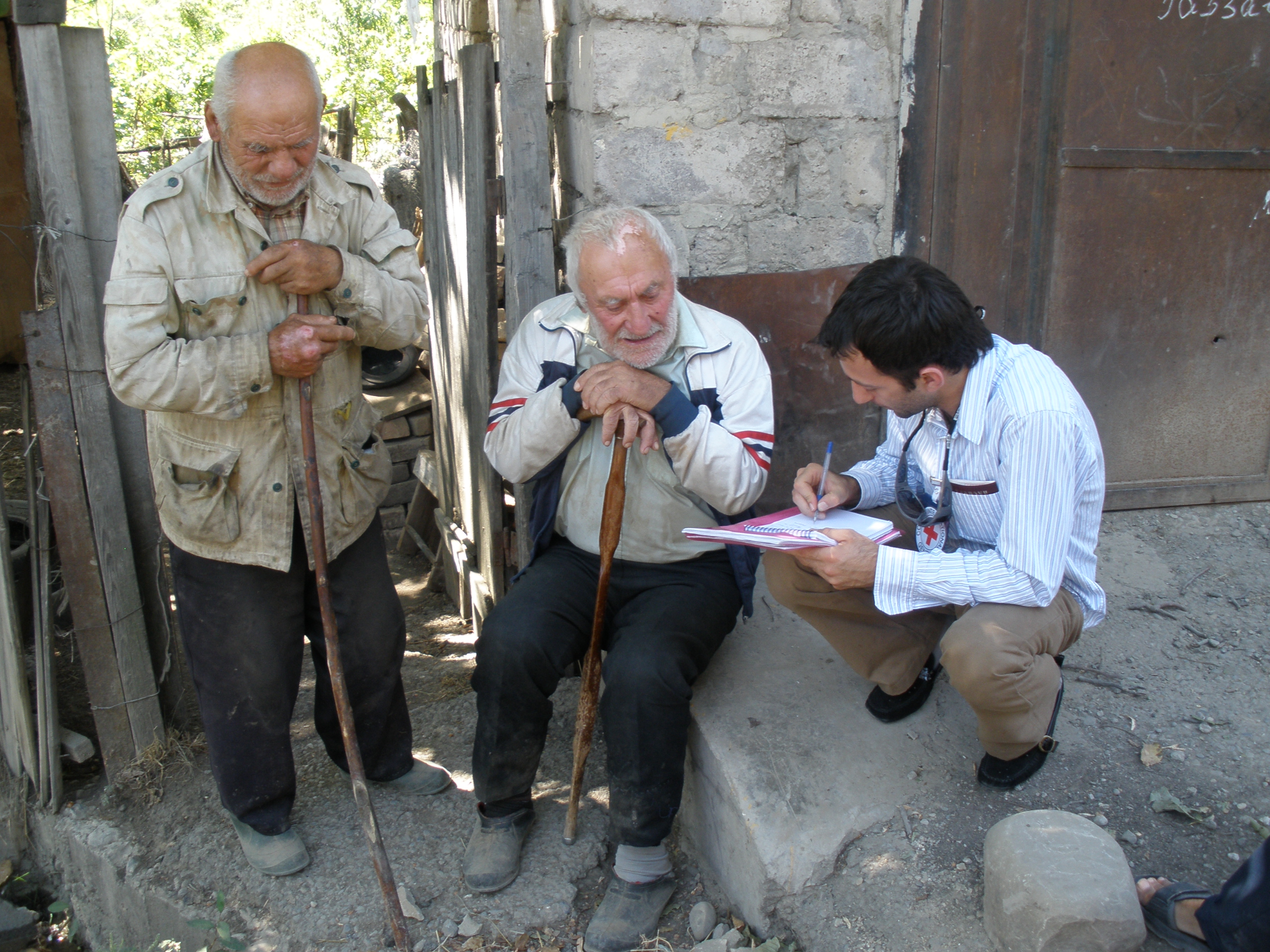Humanitarian crisis deepens in troubled Yemen

Aid agencies have expressed grave concern about the fate of tens of thousands of people trapped by fierce fighting in the northern Yemeni city of Saada.
The Swiss-run International Committee of the Red Cross, which has a delegation in Yemen, believes the civilians urgently need assistance, while a Swiss expert warns that the ongoing instability could jeopardise the existence of the Yemeni state.
The ICRC, in close cooperation with the Yemeni Red Crescent Society (YRCS), has been managing several camps for displaced people in recent years in Saada, Jean-Nicolas Marti, head of the delegation in Yemen, told swissinfo.ch.
“It’s extremely difficult to have a precise picture of how many people are displaced,” Marti said.
“What I can say is that the ICRC together with the YRCS have registered 25,000 displaced people in recent weeks in both Saada and Amran provinces. These people are beginning to get assistance from us,” he added.
“We haven’t reached them all yet but we have started to assist with drinking water, non-food items like blankets, mattresses and cooking sets and tents for those who have reached the camps.”
Local team
The ICRC has a full team of 45 people, including five international staff, based in Saada. The ICRC takes the security of its personnel very seriously, Marti said.
“Northern Yemen is a very dangerous place. Back in June there were nine expatriates kidnapped and three of them were killed. Since my arrival in Yemen nine months ago it has been quite a challenge to manage the security of our staff. “
On Wednesday, the United Nations launched an emergency funding appeal to deal with the humanitarian crisis in Yemen (see right column).
The ICRC already received a budget extension in June bringing its annual funding up to SFr20 million ($18.78 million). “This should be sufficient to reach the beneficiaries we want to reach by the end of the year,” Marti said.
Troubled past and present
Yemen is a troubled country by any standards. The only low-income country in the Arabian peninsula, it does not have the rich natural resources of its neighbours. Resentment lingers in the south over northern dominance since the country unified in 1991.
But the worst conflict, sectarian in nature, is happening in the north where government troops are battling a rebellion in the mountainous Saada region bordering Saudi Arabia.
Independent information about the conduct of the war has been hard to verify as the area has been closed to non-state media.
The rebels of the Shi’ite Muslim Zaydi sect say they want more autonomy. They oppose the spread of Saudi-influenced Sunni Muslim fundamentalism (Wahhabism) and say they are defending their area against government oppression.
Outside influence
The government says the rebels want to restore a Shi’ite state overthrown in the 1960s. It has also accused the Iranian media of stoking the conflict.
Saudi Arabia and Iran are competing for influence in this region, according to Zurich University political scientist Elham Manea.
“The most worrying aspect of this problem is that the instability is creating a haven for Islamic militants,” Arabian peninsula expert Manea told swissinfo.ch.
“The state is unable to deliver to its own citizens and to control its own territory and that has led to a situation where al-Qaeda activists are operating in areas of Yemen that are outside the state’s control.”
Manea, who holds Swiss and Yemeni citizenship, is a regular visitor to the country, which was known as Arabia Felix – Happy Arabia – in ancient times. She warns that the very existence of Yemen is under threat.
“If these two conflicts [between north and south and within the north] are not dealt with wisely in a way that addresses the grievances of these two populations, Yemen could end up as a failed state.
“We could see the country disintegrating into different units and being unable to control its territory in a similar manner as we see today in Somalia.”
The United Nations is asking donors for $23.5 million (SFr25 million) to bring food, tents and other aid to around 150,000 Yemenis uprooted by fighting between government forces and rebels.
UN humanitarian chief John Holmes says the money is needed for various aid programs in northern Yemen until the end of the year.
He says many of the uprooted are trapped by fighting and aid workers are unable to reach them.
The UN has asked for humanitarian corridors to get relief goods to the people but this has not yet been agreed to by the rebels.
He says the total number of people displaced includes some 95,000 who had been driven from their homes by previous fighting going back to 2004.
The ICRC first set up a delegation and began to work in Yemen during the civil war in the 1960s.
Working with the Yemeni Red Crescent Society, it assists people affected by the fighting in the north of the country, particularly with medical care, basic relief items and clean water.
Through its tracing services, the ICRC helps to restore contact between asylum seekers and refugees and their relatives back home.
Currently it has a total of 117 staff in the country: 20 international and 52 national staff based in the capital Sanaa, as well as five international and 40 national staff in the sub delegation in Saada, in the north of Yemen.

In compliance with the JTI standards
More: SWI swissinfo.ch certified by the Journalism Trust Initiative




You can find an overview of ongoing debates with our journalists here . Please join us!
If you want to start a conversation about a topic raised in this article or want to report factual errors, email us at english@swissinfo.ch.